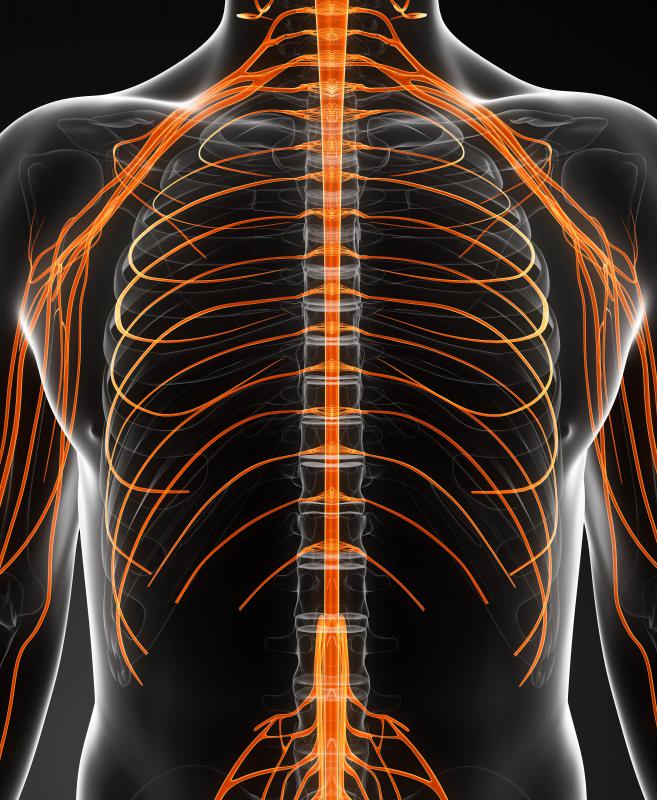At TheHealthBoard, we're committed to delivering accurate, trustworthy information. Our expert-authored content is rigorously fact-checked and sourced from credible authorities. Discover how we uphold the highest standards in providing you with reliable knowledge.
What Are the External Intercostal Muscles?
The external intercostal muscles are a type of muscle found between the ribs in the human chest area. They primarily aid in inhalation during breathing by moving the ribs upward and creating space in the lungs. Each of the 11 external intercostal muscles is in close proximity to a corresponding internal intercostal muscle and the intercostal nerves.
The intercostal spaces — or the spaces between each of the ribs — contain the external intercostal muscles. Structurally, they begin on a back portion of one rib's bottom and extend to the front and top of the rib below. They then become thin tissues called anterior intercostal membranes near the ribs' inner cartilage portion at the sternum. Both skin and a connective tissue fiber known as fascia cover these muscles.

Diagonal slants in the muscles allow easier contraction, and the ability to contract is an important component in the external intercostal muscles’ function. As each muscle contracts, it shortens and thereby raises the two ribs to which it is attached. Once the ribs move upward, the amount of space inside the lungs increases.
The external intercostal contractions are begun in response to contractions in the muscle at the bottom of the rib cage, or the diaphragm. This in turn causes the obliquus externus — a muscle of the abdominal wall — to expand outward. The entire process lowers pressure in the chest and allows incoming air to fill the lungs, thus instigating the inhalation process.

The intercostal muscles also include internal intercostal muscles. While some of these particular muscle types perform inhalation processes as well, most of the internal muscles aid in exhalation. They are perpendicular to the external intercostal muscles. Collectively, both types of intercostal muscles work to regulate the breathing processes that keep organisms alive.

Nerves that provide motor functions run through the intercostal muscles. A main intercostal nerve is located around the internal intercostal muscle. One branch of the nerve goes between the external and internal intercostal muscles, providing nerve function to the former. This branch is usually called the external intercostal nerve. Another branch of the main nerve runs close to the external intercostal muscles and assists with nerve functioning in abdominal muscles.
If these muscles are torn or otherwise damaged, breathing may become painful. Sharp pains upon inhalation are not uncommon for intercostal injuries. Typically, such injuries result from repetitive motions that twist the torso or swing the arms. Stretching and breathing exercises before a strenuous activity can help reduce the danger of injury.
AS FEATURED ON:
AS FEATURED ON:













Discussion Comments
I never really thought about muscles playing any part in the function of the lungs, but after reading this article, I see that they do. The lungs fill with air, so they need space in order to fully fill up.
The external intercostal muscles allow this to happen by lifting the ribs and relaxing to lower them back down when the person exhales and the lungs deflate a little. Everything works together for the good of the body.
@StarJo – Ouch! Out of all the muscles that he could have injured, I'm sure that the intercostals were some of the worst!
I mean, you feel them every time you breathe. It must be hard for him to get a good breath. I ache just thinking about it!
No cracks or fractures have shown up on the X-rays, but he is still in a lot of pain. He gets really sore if he walks around much at all, and breathing becomes painful, too.
The doctor thinks that his intercostal muscles are just fatigued from the strain of the accident. He says that time is all that will really heal them.
Post your comments